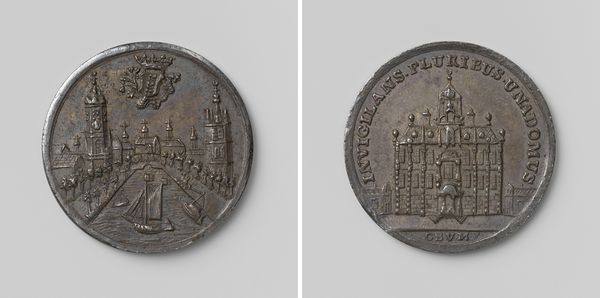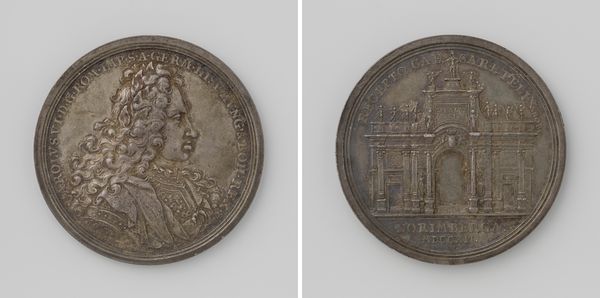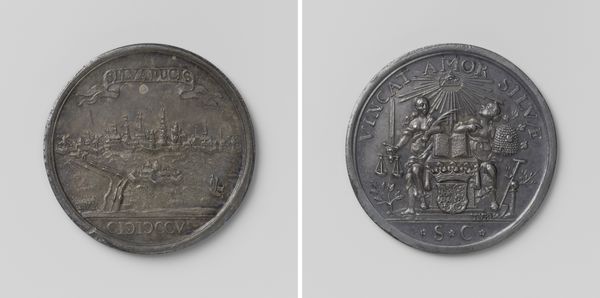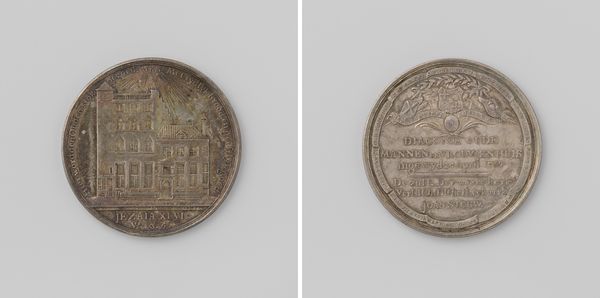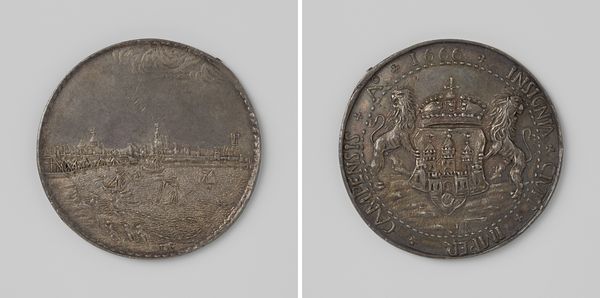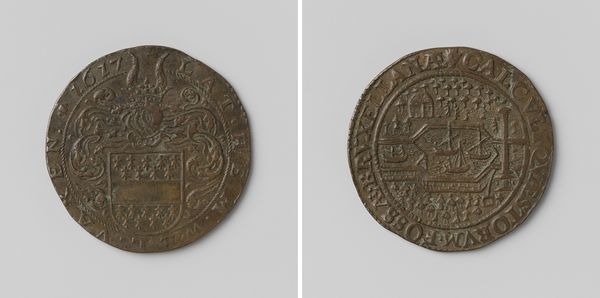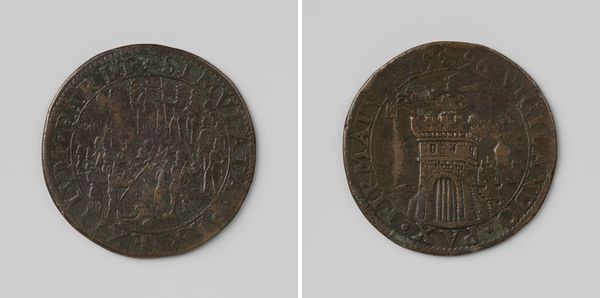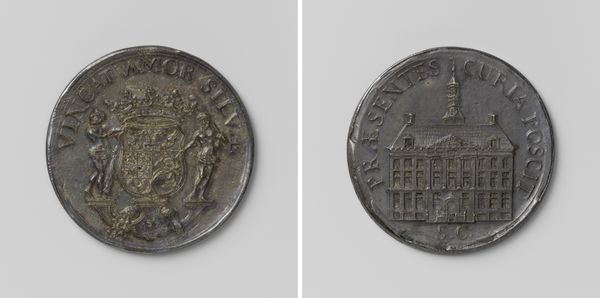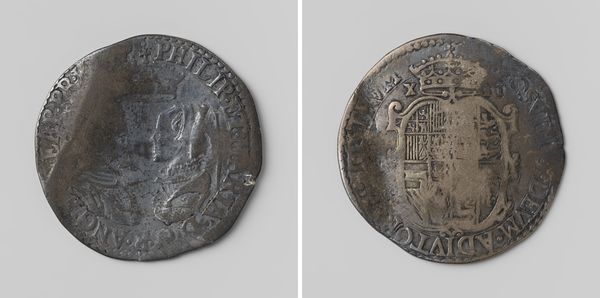
Dimensions: diameter 3.3 cm, weight 11.27 gr
Copyright: Rijks Museum: Open Domain
Curator: Right now we're looking at the "Vroedschapspenning van de stad Delft," a medal crafted by Gijsbert van Moelingen sometime between 1776 and 1779. It is struck in metal, a detailed circular relief. What catches your eye first about this piece? Editor: Its scale! It looks deceptively humble at first glance but the detail, wow, it's immense, especially on the cityscape side with all the tiny figures lining the canal. It whispers of vast gatherings, like history compressed into a pocket-sized universe. Curator: Exactly! It’s more than just a pretty cityscape, of course. These vroedschapspenningen, were essentially commemorative coins gifted to members of the city council, the vroedschap, in Delft. They functioned as status symbols but also as potent reminders of civic duty and collective identity. Editor: So, imagine receiving one of these – a little weighty power in the palm of your hand! Does it affect their actions? The weight of history or responsibility might influence their daily workings… Curator: I think so. You know, on one side you see this rather idealised image of Delft itself, full of orderly lines, prosperous-looking buildings, reinforcing the notion of a well-governed city. The other side presents what appears to be the City Hall. Editor: Almost like a visual promise. "We will be this strong building" – but looking at it practically – I mean, imagine receiving a lump of metal. Beautiful yes but were people really so moved by symbols back then? Curator: It's easy to underestimate symbols now, but think of national flags, or even modern political pins! Back then, in a society steeped in tradition, these objects were crucial in shaping public perception and reinforcing the authority of the ruling class. These weren't throwaway items. They spoke volumes. Editor: And to know a place through such objects really connects to them differently from a picture… looking at the relief work now I imagine that at the time this must have created such an emotional response to the art—making them believe in a powerful idea. Curator: A potent reminder that even the smallest of objects can carry tremendous social weight and artistic complexity! Editor: Precisely! These kinds of reflections highlight the importance of not simply seeing these artworks but of placing them in their appropriate political and social context!
Comments
No comments
Be the first to comment and join the conversation on the ultimate creative platform.
